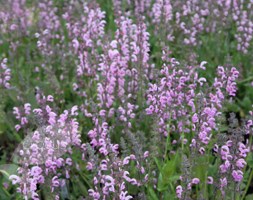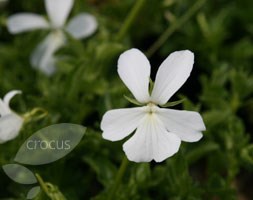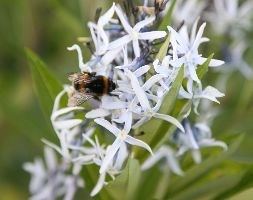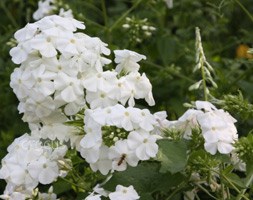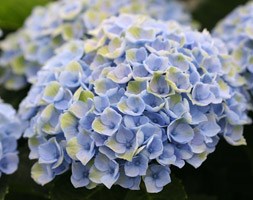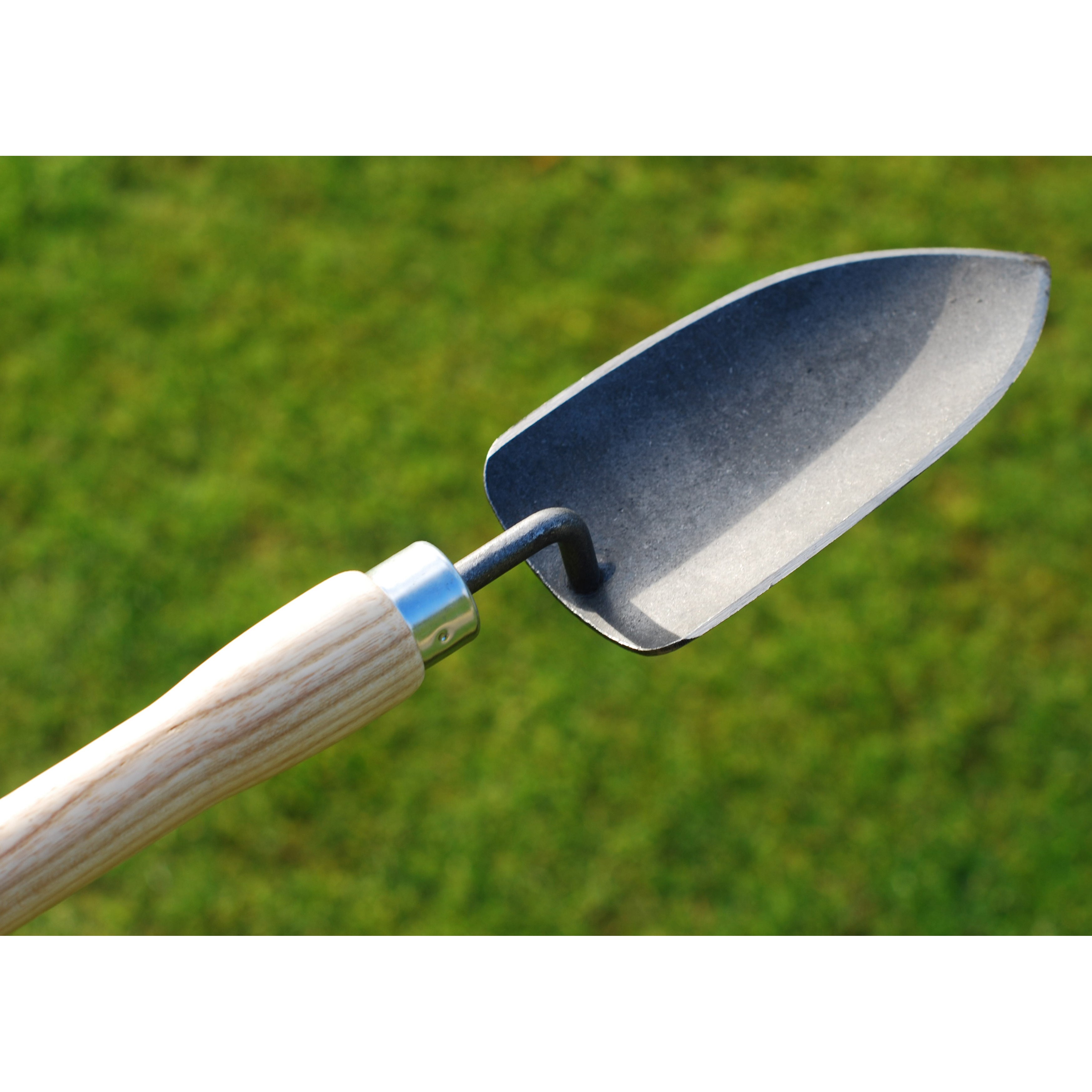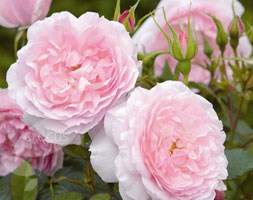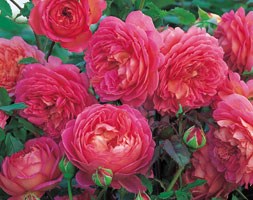Price reductions at Crocus
by Sarah - November 1st, 2013.Filed under: Crocus, Price Reductions.
Crocus reduced the price on these items today
Tulipa ‘Blue Heron’ (fringed tulip bulbs) was £3.99 now £2.99
Position: full sun Soil: fertile, well-drained soil Rate of growth: average Flowering period: Apr-May Flower colour: violet-blue Other features: excellent cut-flowers Hardiness: fully hardy Bulb size: 11/12 The violet-blue open flowers have a darker centre and an attractive pale lilac frilly edge that resembles hoar frosting. They are long lasting, either in the border or as cut flowers. Garden care: In September to December plant bulbs 15-20cm deep and 10-15cm apart in fertile, well-drained soil. Alternatively, allow 7-9 bulbs per 30cm sq. After flowering dead-head and apply a balanced liquid fertiliser each week for the first month. Once the foliage has died down naturally lift the bulbs and store in a cool greenhouse.
Salvia pratensis ‘Lapis Lazuli’ (meadow clary) was £8.99 now £5.99
Position: full sun Soil: moderately fertile, moist but well-drained soil Rate of growth: average Flowering period: May to July Flower colour: pale pink Other features: useful early flowering form Hardiness: fully hardy One of the earliest of the salvias to flower. Each slender upright stem carries a series of comparatively large, hooded flowers in candyfloss pink, which open in succession up its length, while a large rosette of grey green leaves form a dense groundcover. A fine Salvia that exhibits strong and vigorous growth, and often producing a second flush of flowers later in July and August. The flowers are attractive to bees and butterflies. Garden care: To prolong flowering, cut out spent flower spikes as soon as they start to fade, leaving foliage to mature into rich autumn tones. Alternatively, cut back the whole plant after early flowering in late May/June to enjoy a second flush of blooms in July and August. Apply a generous 5-7cm (2 -3in) mulch of well-rotted garden compost or manure around the base of the plant in spring.
Viola cornuta ‘Alba Group’ (horned violet) was £8.99 now £5.99
Position: full sun or partial shade Soil: fertile, humus-rich, moist, well-drained soil Rate of growth: average to fast-growing Flowering period: May to August Flower colour: pure white Hardiness: fully hardy Masses of subtly scented, pure white flowers from May to August and toothed, oval, fresh green leaves. This horned white violet is ideal for the front of a moist, well-drained border in sun or partial shade. Spreading in habit, the evergreen foliage should be cut back after flowering to maintain a neat, compact shape. Garden care: To minimise the risk of fungal diseases always use new, sterilised compost for container plants. Deadhead regularly to prolong flowering.
Amsonia tabernaemontana var. salicifolia (amsonia) was £7.99 now £5.99
Position: full sun or partial shade Soil: moist but well-drained soil Rate of growth: average Flowering period: May to July Hardiness: fully hardy These easy to grow perennials will create a massive impact when their dark blue flowerbuds open to reveal their star-like, steely blue flowers in late spring and summer. The flowers are loosely held, in slightly pendulous clusters on top of tall stems bearing slender, tapering leaves, which turn interesting shades of yellow before dying back in autumn. The flowers can be cut and used in floral arrangements, but to stem the milky sap the end of the stems should be seared in a flame before popping in a vase. Garden care: Divide congested plants in spring.
Phlox paniculata ‘David’ (border phlox) was £7.99 now £5.99
Position: full sun or partial shade Soil: fertile, moist soil Rate of growth: average Flowering period: July to November Hardiness: fully hardy Phlox have always been country garden favourites for their delicious scent and attraction to butterflies and bees. This new variety has gorgeous trusses of hydrangea-like, pure white flowers which appear from July to November above dark green leaves. It is a showy perennial that forms a natural mound and looks wonderful planted near patios or paths where the scent of the flowers can be fully appreciated. It will tolerate full sun or partial shade, but like all phlox, does not like soil that dries out in summer. This vigorous variety has good resistance to powdery mildew too. Garden care: Support with bamboo canes, brushwood or ring stakes before the flowers appear. Phlox are greedy plants, so apply a mulch 5-7cm (2-3 in) deep of well-rotted garden compost or manure in early spring. Shear off the spent flowers to prevent reseeding. If the leaves show signs of powdery mildew , cut down to the ground and dispose of the affected foliage, but do not compost it. Clear away the debris around the plant to reduce the chances of reinfection. Cut down to the ground in autumn. Lift and divide large clumps in autumn or spring.
Hydrangea Magical Revolution (‘Hokiomarevo’) (PBR) (hydrangea) was £6.99 now £5.99
Position: full sun or partial shade Soil: moist, well-drained, moderately fertile, humus-rich soil Rate of growth: average Flowering period: July to September Flower colour: blue, then green-flushed cream, later purple-flushed Other features: contact with the foliage may aggravate skin allergies; the flower-heads make excellent dried flower arrangements Hardiness: fully hardy Initially blue, the flowerheads turn green and cream before taking on a purple-blue hue around the edges. To maintain the blue flower colour in subsequent years, we advise using hydrangea colourant. Garden care:To enhance flowering prune in spring, cutting back the flowered stems to a strong pair of buds below each flower-head. Once established, remove a quarter to a third of the old shoots to the base of the plant.
De Wit long handled planting trowel was £18.99 now £16.99
Handy for reaching into those hard to reach spots towards the back of the border or raised bed, these hand tools have a longer, shock-resistant, ash handle that features a unique ‘bulb’ design at each end, which will help keep your hands from slipping. The Dutch are rightly regarded as makers of the finest gardening tools. De Wit have been around longer than anyone. They started in 1898 and the 4th generation of De Wits are now in charge of the business; one is a trained wood turner, the other trained as a blacksmith. De Wit forge their tools from carbon steel in the traditional way. Carbon Steel is naturally tougher than stainless steel and is not prone to metal fatigue. De Wit also burnish their steel. This not only helps to protect it for longer but gives it a patina that blackens it – just like traditional English tools from the Edwardian era. All De Wit tools have turned hardwood handles of oiled Ash. Ash is not only very strong but resists shock better than woods like oak or beech, which is why it was traditionally used for Axe handles. The result is a beautiful tool to hold in the hand but rugged and durable. They feel so natural to use that they are like an extension of the person that uses them. These tools will give you a lifetime of use, until you hand them on. Measurements: Length 67cm x width 8cm x height 5cm
Rosa Lady Salisbury (‘Auscezed’) (PBR) (rose Lady Salisbury (shrub)) was £18.99 now £17.99
Position: full sun Soil: fertile, humus-rich, moist, well-drained soil Rate of growth: fast-growing Flowering period: June and August Flower colour: sugar-pink Other features: excellent cut-flowers Hardiness: fully hardy Forming a soft rosette of sugar-pink petals which become paler as they mature, the flowers have a light scent and appear continuously over a long period from early summer. When fully open the central cluster of golden stamens becomes visible, creating a pretty contrast. All our roses are grown in an open field and then dug up when the weather conditions are right in October or November. Some suppliers send out their roses as ‘bare root’ plants (ie without pots or compost), but we pot ours up as it helps to keep the roots hydrated and in good condition. As they are dormant throughout the winter, they will not produce any new roots until spring, so don’t be surprised if the compost falls away from the roots when you take them out of their pots. The roses can be kept in their pots throughout the winter provided they are kept well fed and watered, however ideally they should planted out as soon as possible. They will already have been cut back so no further pruning will be required, apart from snipping off any tips that have died back. Routine pruning can begin in late winter the year after planting. Garden care: If planting in winter, choose a frost-free spell when the soil is not frozen. Roses are quite deep-rooted plants so dig a deep hole roughly twice as wide as the plants roots and mix in a generous amount of composted organic matter. A top-dressing of a general purpose fertiliser can be worked into the surrounding soil and we also recommend using Rose Rootgrow at this stage to encourage better root development. This is particularly important when planting into a bed where roses have previously been grown as Rose Rootgrow is said to combat rose sickness (aka. replant disease). Remove the plants from their pots and gently spread out the roots before placing them in the centre of the hole. Try to ensure that the ‘bud union’ (the point where the cultivated rose has been grafted onto the rootstock, and from where the shoots emerge) is at soil level. You can judge this quite easily by laying something flat, like a spade handle or bamboo cane, across the top of the hole. When they are at the right height, back-fill the hole, firming the soil down gently before wate
Rosa Jubilee Celebration (‘Aushunter’) (PBR) (rose Jubilee Celebration (shrub)) was £18.99 now £17.99
Position: full sun Soil: fertile, humus-rich, moist, well-drained soil Rate of growth: fast-growing Flowering period: June to September Flower colour: salmon-pink Other features: excellent cut-flowers Hardiness: fully hardy Name to commemorate the Queen’s Golden Jubilee, David Austin have declared this ‘one of the finest roses we have introduced so far’. Given that they produce some really wonderful roses, that is praise indeed! It produces a mass of golden-flushed, pink blooms through the summer, each held clear of the foliage on stout stems. Their scent is strong and fruity. A vigorous and healthy shrub rose that will provide months of colour in the border. All our roses are grown in an open field and then dug up when the weather conditions are right in October or November. Some suppliers send out their roses as ‘bare root’ plants (ie without pots or compost), but we pot ours up as it helps to keep the roots hydrated and in good condition. As they are dormant throughout the winter, they will not produce any new roots until spring, so don’t be surprised if the compost falls away from the roots when you take them out of their pots. The roses can be kept in their pots throughout the winter provided they are kept well fed and watered, however ideally they should planted out as soon as possible. They will already have been cut back so no further pruning will be required, apart from snipping off any tips that have died back. Routine pruning can begin in late winter the year after planting. Garden care: If planting in winter, choose a frost-free spell when the soil is not frozen. Roses are quite deep-rooted plants so dig a deep hole roughly twice as wide as the plants roots and mix in a generous amount of composted organic matter. A top-dressing of a general purpose fertiliser can be worked into the surrounding soil and we also recommend using Rose Rootgrow at this stage to encourage better root development. This is particularly important when planting into a bed where roses have previously been grown as Rose Rootgrow is said to combat rose sickness (aka. replant disease). Remove the plants from their pots and gently spread out the roots before placing them in the centre of the hole. Try to ensure that the ‘bud union’ (the point where the cultivated rose has been grafted onto the rootstock, and from where the shoots emerge) is at soil level. You can judge this quite ea








